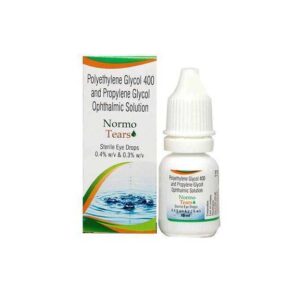PROPYLENE GLYCOL + POLYETHYENE GLYCOL 3350
Propylene Glycol: Propylene Glycol (PG) is a synthetic liquid substance commonly used in various industries, including medicine and cosmetics. In medicine, it is primarily used as a solvent, preservative, and a component of various medications and medical products.
Mechanism of Action:
Propylene Glycol is an osmotic agent, meaning it helps in maintaining the balance of fluid and electrolytes in the body. When used intravenously, it draws water into the bloodstream to increase blood volume and improve the delivery of medications or nutrients.
Use:
Propylene Glycol is used in a variety of medical products, such as intravenous infusions, topical medications, creams and lotions, oral and cough syrups, and some oral medication suspensions. It is also used as a stabilizer in some vaccines and as a vehicle for certain eye drops and ear preparations.
Dose:
The dose of Propylene Glycol varies depending on the specific medication or product in which it is contained. The correct dosage is determined by healthcare professionals and usually mentioned on the product label or prescribed by the doctor.
Side Effects:
Propylene Glycol is generally considered safe and well-tolerated when used as directed. However, some people may experience allergic reactions, including rash, itching, or swelling, after exposure to the drug. In rare cases, it can cause skin irritation, redness, or burning sensation at the application site.
When used intravenously or in high concentrations, Propylene Glycol can potentially cause more severe side effects. These include lactic acidosis (a condition characterized by the buildup of lactic acid in the body), metabolic acidosis (an imbalance in the body’s acid-base balance), or an allergic reaction known as propylene glycol-induced anaphylaxis. These reactions are relatively rare but may occur in sensitive individuals or with prolonged use.
It is important to note that propylene glycol is metabolized by the body and excreted in the urine, so individuals with kidney or liver problems may need to use caution when using products containing this compound.
As with any medication or substance, it is always advisable to consult healthcare professionals or read the drug label for specific information and precautions before using Propylene Glycol-containing products.
Polyethyene Glycol 3350: Polyethylene Glycol 3350, also known as PEG 3350, is a medication used to treat constipation. It is a type of osmotic laxative that works by drawing water into the intestines, making stools softer and easier to pass.
When taken orally, PEG 3350 is not absorbed into the bloodstream and remains in the gastrointestinal tract. It acts by increasing the water content in the intestines, which helps to soften the stool and stimulate bowel movements. This mechanism of action helps relieve constipation and promote regular bowel movements.
The recommended dose of PEG 3350 for constipation in adults is 17 grams (about one capful of the powder) mixed with water, juice, soda, or coffee and taken once daily. For children, the dose is based on their age and weight, as directed by a healthcare professional.
Common side effects of PEG 3350 include bloating, gas, stomach cramps, and diarrhea. These side effects are usually mild and go away on their own. However, if they persist or worsen, it is important to consult a healthcare provider. Rare but serious side effects may include severe allergic reactions, rectal bleeding, and electrolyte imbalance. Seek immediate medical attention if any of these occur.
It is important to note that PEG 3350 should not be used by individuals with a known bowel obstruction or perforation, or by those who are unable to consume and absorb sufficient fluids. It is always advisable to consult a healthcare provider before starting any new medication to ensure it is appropriate for your specific condition and to discuss potential side effects or interactions with other drugs.

